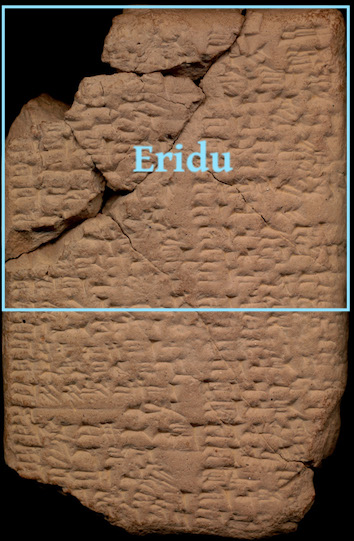Eturkalama (temple of Ištar as Bēlet-Bābili at Babylon)
Eturkalama was one of the thirteen religious buildings in the Eridu district of East Babylon, at least according to Tablet IV of the scholarly compendium Tintir = Babylon. That temple was dedicated to the goddess Ištar in her manifestation as Bēlet-Bābili ("Lady of Babylon"). This still-to-be-discovered temple had a long history. It is first mentioned in the thirteenth year of the Old Babylonian king Apil-Sîn and last mentioned around 90 BC in texts found in the Parthian-Period Rahimesu archive.

Names and Spellings
This temple at Babylon went by the Sumerian ceremonial name Eturkalama, which means "House, Cattle-Pen of the Land."
- Written Forms: e₂-tur₃-kalam-ma.
Known Builders
- Old Babylonian (ca. 1900–1600 BC)
- Apil-Sîn (r. 1830–1813 BC)
- Hammu-rāpi (r. 1792–1750 BC)
- Neo-Assyrian (ca. 911–612 BC)
- Ashurbanipal (r. 668–ca. 631 BC)
Building History
Eturkalama is first attested in year names of the kings of the First Dynasty of Babylon (ca. 1894–1595 BC), when at least two of its kings rebuilt it. Apil-Sîn, the dynasty's fourth ruler, complete his work on this Ištar temple at Babylon in his thirteenth regnal year (ca. 1817 BC), and his grandson Hammu-rāpi, the sixth and most-powerful member of that dynastic line, renovated Eturkalama during his thirty-fourth year as king (ca. 1758 BC). Hammu-rāpi's son and immediate successor Samsu-iluna (r. 1749–1712 BC) dedicated an alabaster statue to the Ištar (of Babylon) in his eighth year (ca. 1741 BC); the monument was placed in the temple's courtyard.
After a gap of approximately 1075 years, information about the building history of Eturkalama resumes during the early reign of the Neo-Assyrian king Ashurbanipal. Sometime between 668 BC and 652 BC, Assyria's last great king states that he had Ištar of Babylon's temple built anew. The Akkadian inscription commemorating this deed, unfortunately, provides no details about the project itself, including whether he both initiated and completed the project or whether he merely finished what his father Esarhaddon (r. 680–669 BC) had started while he was still alive. Given the fact that many of Esarhaddon's building projects in Babylon remained unfinished at the time of his death in late 669 BC, it is not unreasonable to assume that Ashurbanipal completed his father's work on this temple of Ištar, rather than taking it upon himself to start an entirely new project in that city. Whatever the case might have been, Ashurbanipal's work on Eturkalama took place while his older brother Šamaš-šuma-ukīn (r. 667–648 BC) was king of Babylon.
Although Eturkalama was in use until ca. 90 BC, nothing is known about its building history after the early reign of Ashurbanipal. During the Neo-Babylonian Period (626–539 BC), Nabonidus, Babylon's last native king, visited this temple late in his seventeenth regnal year (539 BC) and made a libation of wine.
Archaeological Remains
Eturkalama has not yet been positively identified in the archaeological record.
Further Reading
- George, A.R. 1992. Babylonian Togographical Texts (Orientalia Lovaniensia Analecta 40), Leuven, pp. 307–308.
- George, A.R. 1993. House Most High. The Temples of Ancient Mesopotamia (Mesopotamian Civilizations 5), Winona Lake, p. 151 no. 1117.
- Pedersén, O. 2021. Babylon: The Great City, Münster, pp. 166–167.
Jamie Novotny
Jamie Novotny, 'Eturkalama (temple of Ištar as Bēlet-Bābili at Babylon)', Babylonian Temples and Monumental Architecture online (BTMAo), The BTMAo Project, a sub-project of MOCCI, [http://oracc.org/btmao/Babylon/TemplesandZiggurat/Eturkalama/]